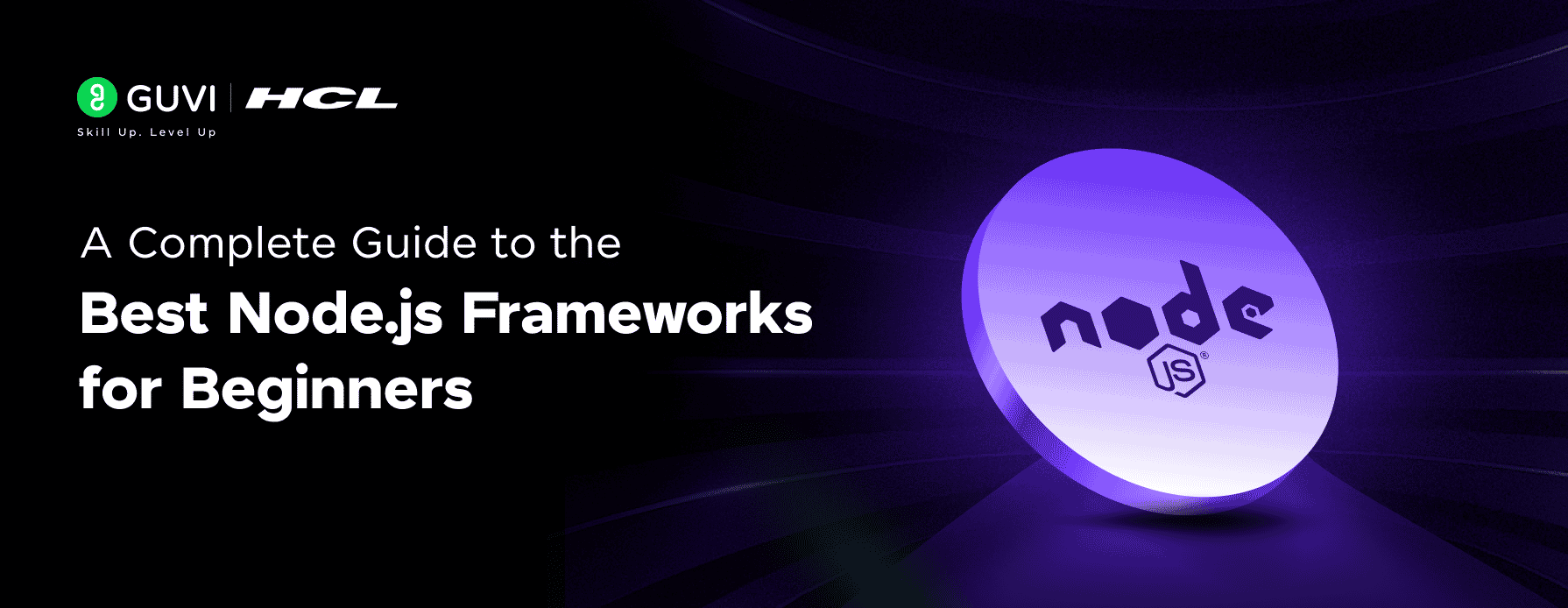
A Complete Guide to the Best Node.js Frameworks for Beginners
Sep 04, 2025 7 Min Read 1577 Views
(Last Updated)
JavaScript continues to lead rankings on GitHub, and Node.js powers many of those repositories. According to W3Techs, Node.js now runs on 4.6% of all websites, and Stack Overflow reports that over 40% of developers actively use it for their projects. This widespread adoption has accelerated the growth of Node.js frameworks, making it essential for beginners to choose the right starting point.
If you want a clear path into Node development and need guidance on which framework to learn first, stay with this guide and discover the strengths of each option.
Table of contents
- What are Node.js Frameworks?
- Top 10 Node.js Frameworks for Modern Web Development in 2025
- Pros and Cons of Each Node.js Framework
- Top Benefits of Node.js Frameworks
- Faster Development Timeline
- Built-in Security Guards
- Predictable Code Structure
- Rich Plugin Ecosystem
- Active Community Support
- Deeper Look at Framework Benefits
- Types of Node frameworks
- Choosing the Right Framework: Key Questions
- Installation and Starter Resources
- Performance Benchmarks and Tunings
- Testing Strategies Across Frameworks
- DevOps and Deployment Considerations
- The Bottom Line
- FAQs
What are Node.js Frameworks?

A Node.js framework is a curated set of libraries, patterns, and utilities that wrap the native HTTP module and expose higher-level building blocks. It often includes routing helpers, view engines, database adapters, and security middleware. Instead of repeating foundational code for every project, developers import one package and gain a scaffold that handles boilerplate and common pitfalls.
Frameworks are opinionated to different degrees. Some take a minimalist stance and let you compose your stack. Others impose strict conventions that dictate folder layout and coding style. The fact is that both styles have merit. Minimal tools promote flexibility, and opinionated tools accelerate onboarding. Beginners should evaluate their comfort with abstraction and choose accordingly.
Also Read: 10 Best Node.js Libraries and Packages in 2025
Top 10 Node.js Frameworks for Modern Web Development in 2025
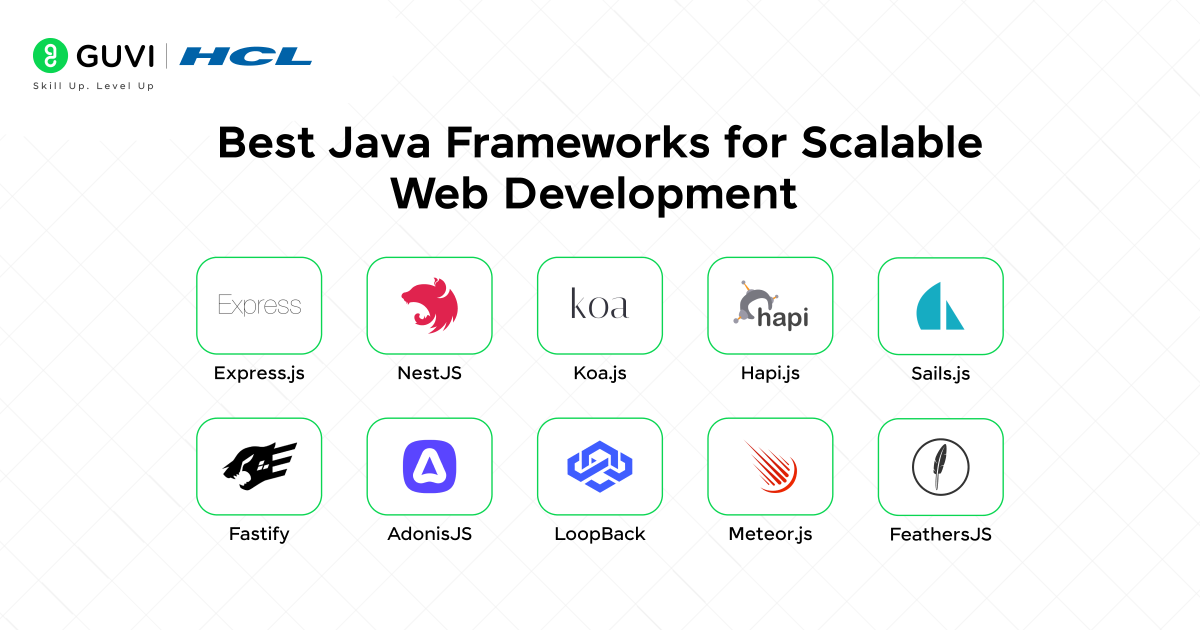
Here are the frameworks you should place on your learning roadmap. Each entry offers a short introduction, a feature set, and practical use scenarios to illustrate fit.
- Express.js
Express is the de facto standard for Node servers and remains a favorite because of its slim surface area. The API exposes simple app, router, and middleware constructs, letting you scale from a single file to enterprise codebases without friction.
Top Features
- Minimal core and extensive middleware registry.
- Straightforward routing with route parameters and sub-routers.
- Robust error handling pattern that forwards problems to central handlers.
Use Cases
- Single-purpose microservices that value a small footprint.
- Custom server-side rendered websites using EJS or Pug.
- Legacy systems that require gradual migration and flexible middleware choices.
- NestJS
Nest brings opinionated architecture and TypeScript safety to Node development. Inspired by Angular, it organizes code into modules, providers, and controllers. That structure guides beginners and supports clean dependency injection.
Top Features
- CLI that scaffolds modules and testing harness quickly.
- Decorator-based route definitions for readable metadata.
- Built-in support for GraphQL and WebSockets alongside REST.
Use Cases
- Enterprise platforms that demand predictable patterns and strong typing.
- Domain-driven models that map business concepts to modules.
- Gateway services that integrate multiple transport layers.
- Koa.js
Koa was written by the original Express authors, yet targets modern JavaScript idioms. It leverages async and await for improved flow control and error propagation. The framework ships without bundled middleware, letting teams choose each dependency deliberately.
Top Features
- Context object that encapsulates request and response for clarity.
- Promise-based flow that eliminates callback nesting.
- Support for content negotiation through built-in helpers.
Use Cases
- High-throughput APIs that need fine-tuned middleware order.
- Services where smaller dependency surfaces aid audit and compliance.
- Teams wanting to explore cutting-edge HTTP features first.
- Hapi.js
Hapi emphasizes configuration over code, which reduces boilerplate in complex projects. Instead of inline route definitions, you pass descriptive objects to the server instance. Validation logic integrates through Joi, a powerful schema builder.
Top Features
- Rich plugin architecture that isolates business domains.
- Lifecycle hooks for request preprocessing and postprocessing.
- Integrated caching strategies for improved performance.
Use Cases
- Financial applications that require granular policy enforcement.
- APIs that need flexible authentication strategies out of the box.
- Shared platforms where plugin boundaries align with team ownership.
- Sails.js
Sails positions itself as the MVC framework for real-time Node apps. It follows convention-over-configuration, similar to Ruby on Rails. Blueprints generate REST endpoints instantly, and the framework wires socket events for live updates.
Top Features
- Waterline ORM supporting multiple databases with one API.
- Auto-generated admin interface for quick data inspection.
- Policy layer that manages route permissions centrally.
Use Cases
- Chat applications need persistent WebSocket channels.
- Dashboards that pull data from varied storage engines.
- Rapid prototypes were default scaffolds that speed discovery.
- Meteor.js
Meteor delivers an end-to-end solution where server and client share code. Its data layer, based on Distributed Data Protocol, syncs collections over the wire. Developers write fewer API calls because state replication happens automatically.
Top Features
- Hot code reload that boosts developer feedback loops.
- Atmosphere package ecosystem with thousands of plugins.
- Built-in live query mechanism that updates UI when data changes.
Use Cases
- Collaborative tools such as whiteboards or shared to-do lists.
- Internal prototypes that demand iteration speed.
- Start-ups needing proof of concept without heavy infrastructure
- Fastify
Fastify focuses on speed and low overhead. Benchmarks often show double the throughput of older stacks under equal load. It achieves this by compiling JSON schemas and limiting abstractions that slow event loops.
Top Features
- Schema-based validation that also drives automatic Swagger docs.
- Encapsulation context that isolates plugins safely.
- Log hooks integrated with Pino for structured output.
Use Cases
- Performance-critical microservices responding to thousands of requests per second.
- Serverless handlers where cold start optimisation matters.
- Projects that treat observability and typed payloads as priorities.
- AdonisJS
Adonis draws inspiration from Laravel and focuses on developer happiness through convention and tooling. The framework includes a relational ORM, a templating engine, and a session-aware authentication layer.
Top Features
- Edge templates with easy control flow and component slots.
- Lucid ORM supporting migrations and model hooks.
- Task scheduler that manages cron jobs inside the codebase.
Use Cases
- Monoliths that prefer SQL and server-rendered views together.
- SaaS platforms need session management and mail queues.
- Teams seeking an all-inclusive stack without external glue code.
- LoopBack
LoopBack accelerates API creation by introspecting data sources and generating models. Its CLI can expose schema endpoints in minutes, which shortens integration cycles with front-end teams.
Top Features
- Strong typing via TypeScript support.
- REST explorer that documents routes as soon as they exist.
- Connectors for Oracle and IBM DB2 alongside common SQL engines.
Use Cases
- Enterprises modernizing legacy databases into REST services.
- Proof-of-concepts that need contract first design quickly.
- Teams standardizing API development across diverse data stores.
- FeathersJS
Feathers embrace a service-oriented pattern. Each service can speak REST, WebSocket, or any protocol backed by adapters. The framework promotes light footprints and quick scaffolding.
Top Features
- Real-time hooks that run before and after service calls.
- Flexible authentication with JWT or OAuth flows.
- Client SDKs for React and Angular that simplify integration.
Use Cases
- Hybrid applications need both HTTP and socket channels.
- Rapid MVPs where time to first demo matters.
- Multi-tenant platforms that rely on hook pipelines for tenancy isolation.
Pros and Cons of Each Node.js Framework
| Framework | Pros | Cons |
| Express.js | Lightweight core; flexible middleware registry. | Minimal structure may cause architectural drift; callback-based legacy code still common. |
| NestJS | Opinionated modules promote clean layering; built‑in TypeScript enhances safety. | Steeper learning curve; added abstraction can reduce raw runtime speed. |
| Koa.js | Async‑await flow improves readability; small surface area limits attack vectors. | Lacks bundled middleware; newcomers must assemble essential pieces manually. |
| Hapi.js | Configuration objects reduce boilerplate; Joi validation strengthens input hygiene. | Verbose route definitions; plugin ecosystem smaller than Express. |
| Sails.js | Blueprint API scaffolds endpoints quickly; real‑time sockets handled out of box. | Waterline ORM may underperform for complex queries; releases arrive slowly. |
| Meteor.js | Shared client‑server code accelerates prototypes; live data sync feels seamless. | Monolithic design limits fine‑grained control; package ecosystem less active today. |
| Fastify | Schema compilation delivers top‑tier throughput; encapsulated plugins prevent leaks. | Newer community; some third‑party modules still maturing. |
| AdonisJS | Laravel‑style conventions speed onboarding; integrated ORM streamlines data tasks. | Opinionated stack reduces flexibility; heavier footprint than minimalist options. |
| LoopBack | CLI introspects databases for rapid model generation; strong TypeScript typing. | Learning curve around connectors; complex setup for small apps. |
| FeathersJS | Unified service layer serves REST and WebSocket; flexible authentication plugins. | Less prescriptive structure can breed inconsistency; smaller contributor base |
Want to get hands-on with backend development?
Check out GUVI’s Node.js Short Course to quickly learn how to build fast and scalable server-side applications, perfect for developers at any stage.
Top Benefits of Node.js Frameworks
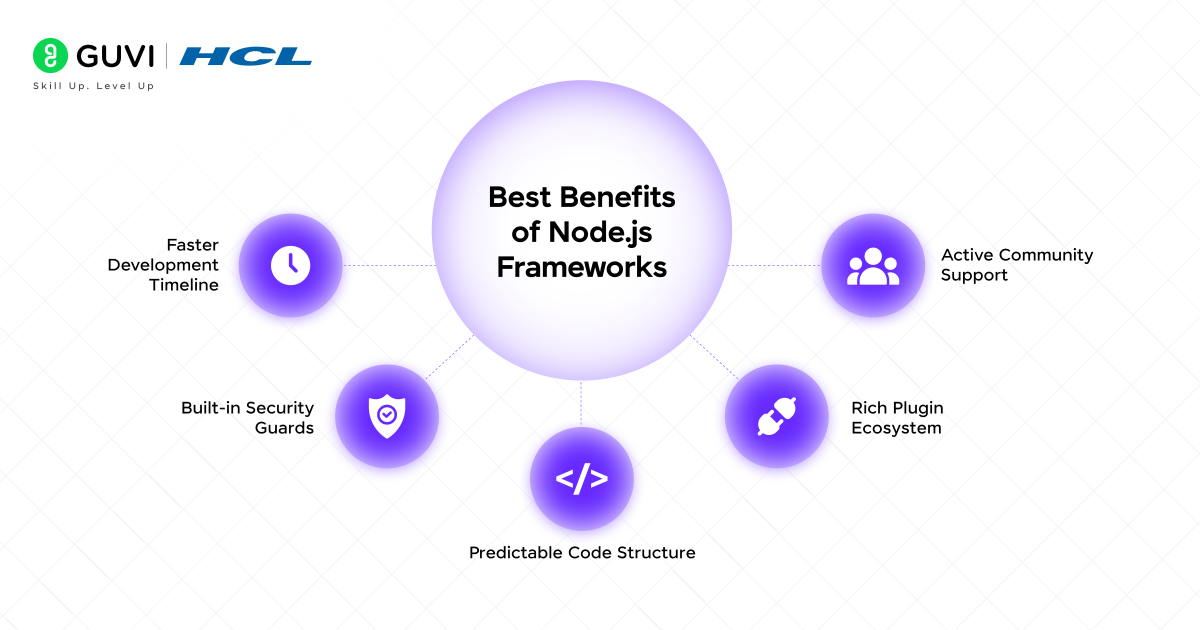
Below are the most useful advantages you gain when adopting a framework rather than starting from scratch:
1. Faster Development Timeline
Scaffolding commands generate controllers and tests within seconds. That automation frees teams to focus on core business logic and user stories. Time saved during setup translates directly into quicker sprints and lower launch costs.
2. Built-in Security Guards
Input validation libraries sanitize payloads before they reach business logic. Many frameworks also add sensible HTTP headers that deter cross-site scripting and clickjacking. These default protections raise the security baseline without extra plugins.
3. Predictable Code Structure
Conventions define where to place routes and services. New developers locate logic quickly and contribute meaningful changes on their first day. This consistency also streamlines code reviews and reduces merge conflicts.
4. Rich Plugin Ecosystem
Community plugins extend core capability. You can drop in authentication and logging modules instead of writing them by hand. That plug-and-play model shortens the path from proof-of-concept to stable release.
5. Active Community Support
Popular frameworks host thriving forums and weekly releases. Documentation stays current, and sample code abounds. When you hit a blocker, chances are someone has solved it and shared the fix.
Deeper Look at Framework Benefits
When you adopt a framework, you inherit collective wisdom. The maintainers have already solved edge cases involving streaming uploads and multipart parsing. You spare yourself weekend debugging sessions because the patches sit inside core modules. That time dividend lets small teams punch above their headcount and hit market windows.
Security also improves when common exploits are handled upstream. Libraries like Helmet integrate with Express and set strict headers. Validation middleware rejects malformed bodies so business code never sees malicious payloads. This defence in depth becomes a shield that grows stronger as the community identifies new threats.
Predictability matters for growing companies because people join and leave projects. A well-known folder layout keeps tribal knowledge inside the repo rather than inside brains. Framework guides act as onboarding manuals and show newcomers where controllers live and how environment variables flow through the build.
Plugins reduce code drift between teams. When both the payments squad and the analytics squad consume the same auth plugin, they follow one token standard. That alignment avoids subtle integration bugs and simplifies shared maintenance.
Community activity ensures that issues rarely linger. Someone across the globe may submit a patch while you sleep. The cycle of report and fix moves quickly, which protects production uptime and maintains developer morale.
Types of Node frameworks
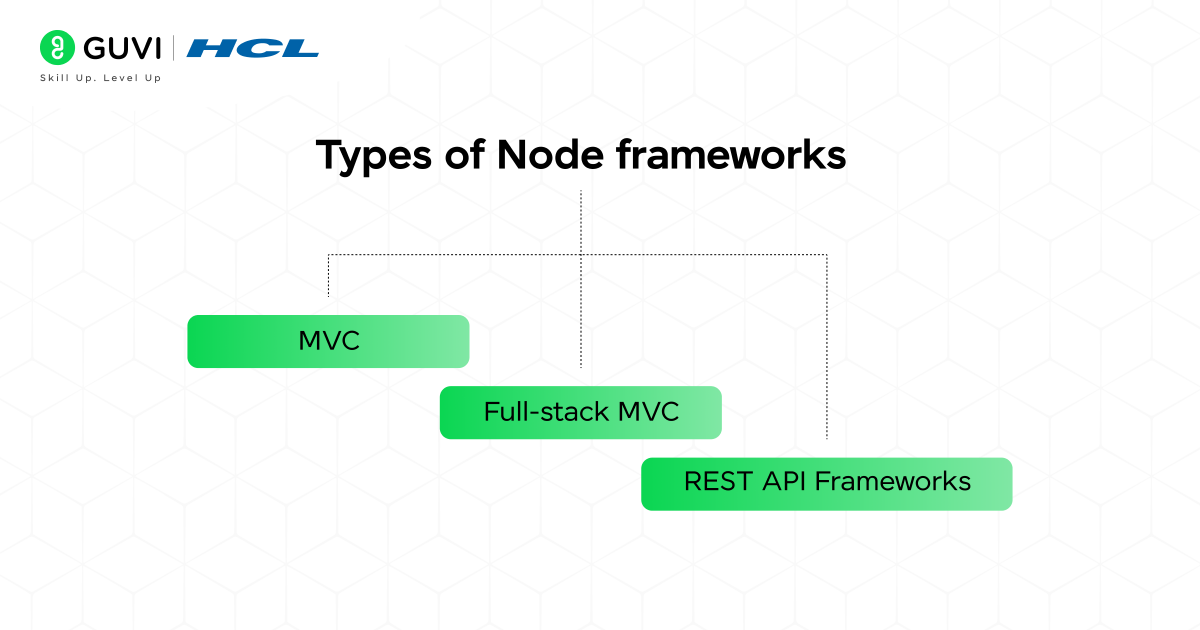
The following are the main categories you will meet while exploring the ecosystem, along with practical context for each.
- MVC
Standard MVC frameworks separate request handling from domain logic. Routes map to controllers, which call models. Views then format responses. This separation encourages single responsibility and improves unit testing.
- Full-stack MVC
Full-stack MVC tools stitch together backend routing and front-end rendering. Some include WebSocket helpers that push updates to browsers automatically. Building a reactive application becomes simpler because one framework manages both sides.
- REST API Frameworks
REST-focused frameworks keep payloads lean and stateless. They emphasize JSON serialization and versioned routes. Teams building microservices adopt these tools to ensure consistent contracts and scalable deployments.
Choosing the Right Framework: Key Questions
Before committing to a stack, you should ask two practical questions.
- First, what problem domain are you tackling? Streaming video services have different needs than storefront APIs.
- Second, how much configuration freedom do you want? Minimal frameworks hand you flexibility and responsibility, and opinionated frameworks hand you conventions and consistency. Matching preference to requirement keeps frustration low.
- Evaluate ecosystem health as well. Star counts matter less than release cadence and open issue responsiveness. A smaller project with active maintainers can outperform a larger project that only sees sporadic commits.
Installation and Starter Resources
Most frameworks provide a CLI or starter repo. Express offers express-generator, and Nest bundles nest-cli. Quickstart tools create a runnable project within seconds. Interactive tutorials then walk through adding routes, tests, and security headers. These guided steps remove anxiety and let self-learners progress without classroom pressure.
Documentation quality varies, yet video courses fill gaps. YouTube channels and dedicated MOOCs cover Express and Nest extensively. Books exist for Hapi and Adonis too, giving deeper architectural context.
Performance Benchmarks and Tunings
Raw benchmarks help compare throughput, yet real performance comes from correct tuning. Fastify tops many charts because it compiles schemas at start-up rather than per request. Express can still reach demanding targets when gzip compression and caching are configured properly. Nest inherits the underlying speed of Express or Fastify, depending on which adapter you choose. This flexibility lets you start with familiarity and later switch to raw speed.
Profiling tools like Clinic Doctor reveal event loop stalls. Flamegraphs show where synchronous code blocks requests. Once detected, you can refactor heavy tasks to worker threads or external services. Frameworks rarely impose limits here; they simply provide structure for improvement.
Testing Strategies Across Frameworks
Unit tests verify controllers, while integration tests validate routes and middleware. Jest pairs well with Nest because decorators simplify mocks. Mocha and Chai remain popular with Express. Hapi ships its server.inject method that spins routes without opening sockets, which speeds feedback cycles. Regardless of choice, a clear testing pyramid protects against regressions and boosts confidence during refactor work.
DevOps and Deployment Considerations
Containerization standardizes runtime environments. Dockerfiles for Node projects often use the node-alpine image to trim size. CI pipelines then lint, test, and package images. Frameworks that embed TypeScript, such as Nest, require a build step but produce smaller runtime artifacts. PM2 or systemd keep services alive on virtual machines, and Kubernetes orchestrates scaling policies in cluster setups.
Observability is non-negotiable once traffic grows. Structured logs with request identifiers ease tracing. Fastify integrates with pino for JSON logs, and Nest adapters forward metrics to Prometheus. Express relies on middleware like Morgan for concise summaries. Choose a logging strategy early because retrofitting later costs time.
Building expertise requires guided practice. The GUVI Full-Stack Development course pairs Node fundamentals with project labs and mentor feedback. Enrol to master these frameworks through real code and job-ready exercises.
The Bottom Line
Node.js frameworks give beginners a launchpad. Choose wisely and experiment regularly to sharpen practical understanding daily. Consistent practice, paired with community feedback, converts theoretical learning into reliable production skill sets. Start small, then iterate upward as confidence grows.
The real value of any framework comes from building, breaking, and improving real projects. Learn how each framework handles routing, authentication, and deployment. Ask questions in forums, join coding groups, and follow new releases. Over time, you’ll develop a clear sense of what fits best for your projects and your workflow. Every project is a new step toward mastery, so keep learning, keep building, and let your work show your progress.
FAQs
1. Which Node.js framework offers the smallest footprint for rapid REST APIs?
Fastify delivers high throughput and low overhead, making lightweight API services straightforward and efficient.
2. What Node.js framework provides built‑in TypeScript support without third‑party wrappers?
NestJS compiles TypeScript natively and ships decorators that simplify strong‑typed route definitions.
3. How can developers migrate existing Express projects to a structured architecture?
NestJS allows gradual adoption because Express adapters let legacy middleware run during phased refactors.
4. Which framework handles real‑time communication alongside traditional REST endpoints?
FeathersJS exposes identical service logic through WebSocket and HTTP, streamlining real‑time feature delivery.
5. What Node.js framework integrates smoothly with serverless platforms for cold‑start reduction?
Fastify’s plugin model and minimal dependencies boot quickly on AWS Lambda and Google Cloud Functions.






























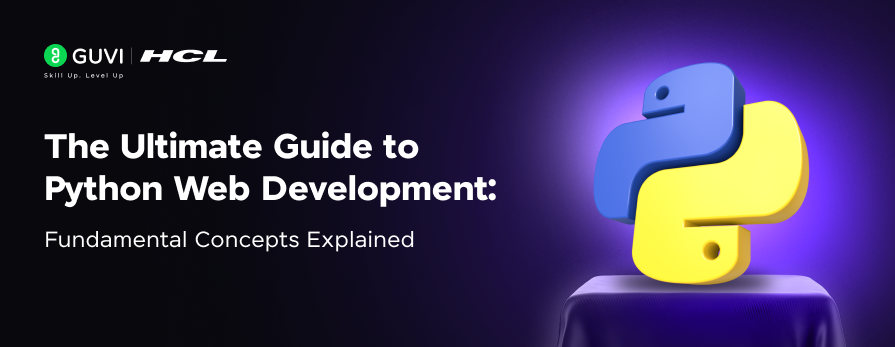
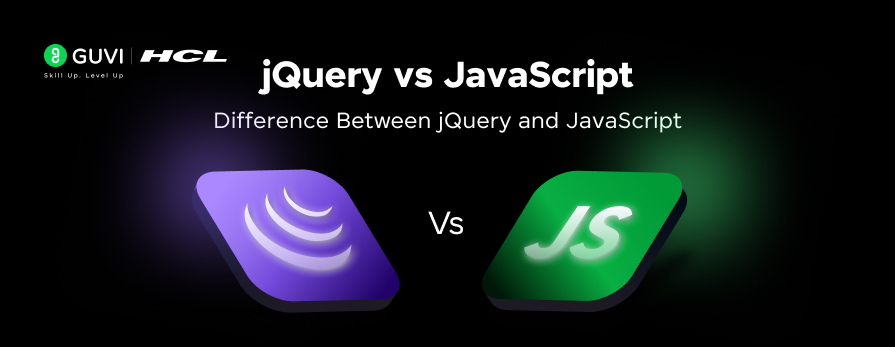




Did you enjoy this article?